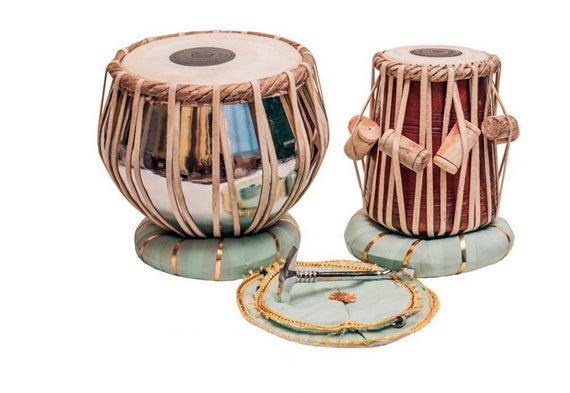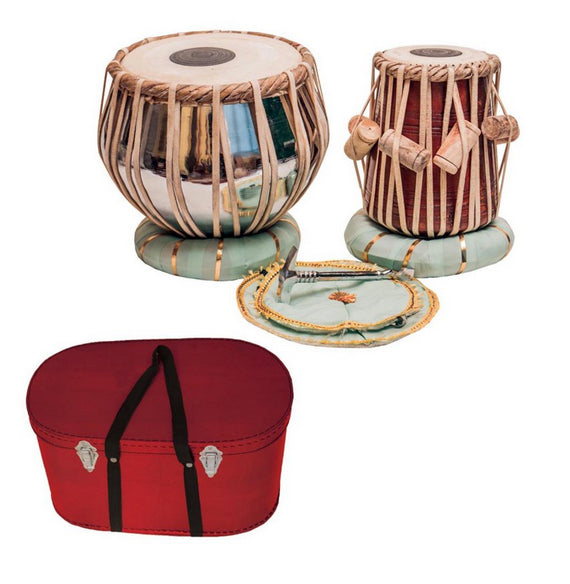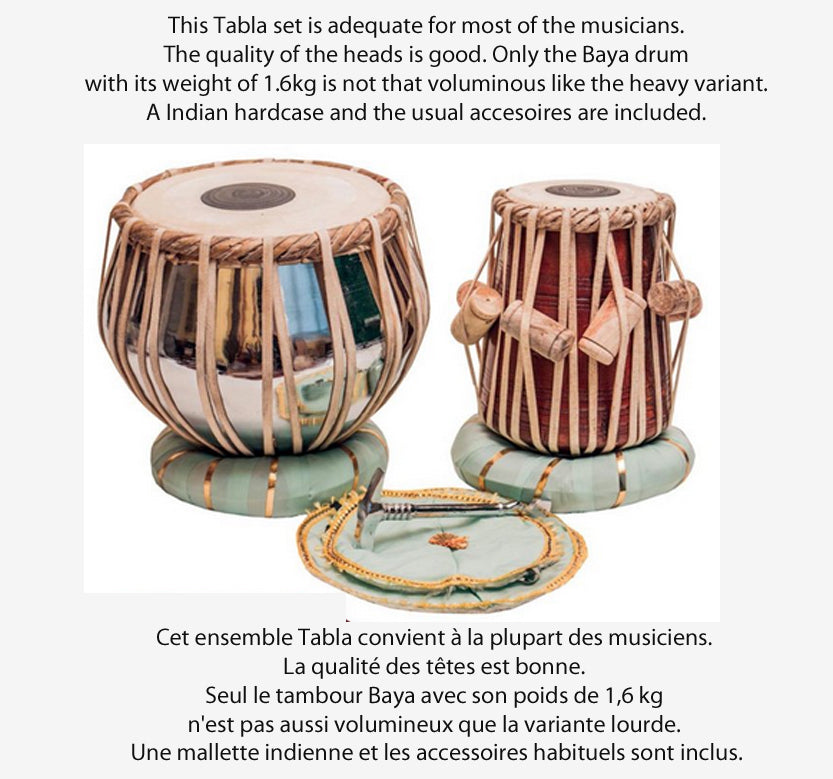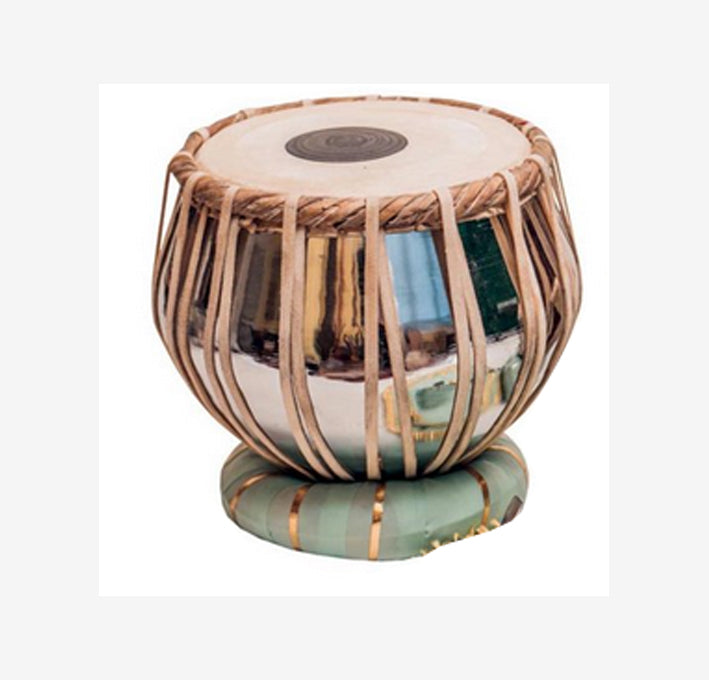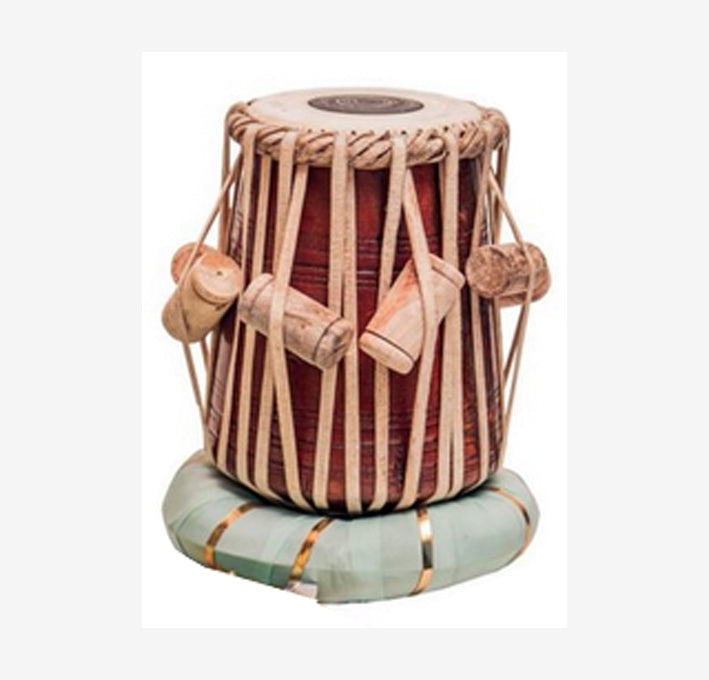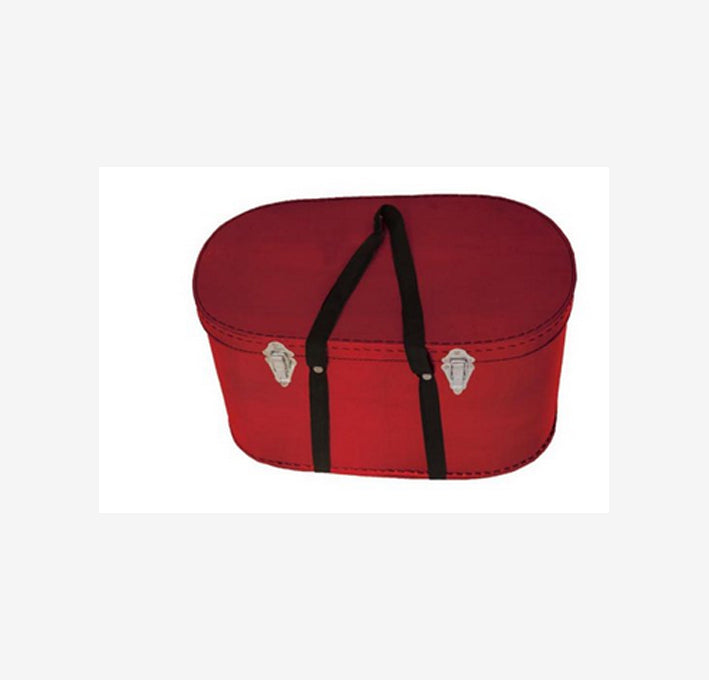Traditional Indian tabla with carrying bag, hammer and cushions. Ø Dayan: 19cm x 28cm high, 4.8kg / Bayan: 30cm!
Traditional Indian tabla with carrying bag, hammer and cushions. Ø Dayan: 19cm x 28cm high, 4.8kg / Bayan: 30cm!
Couldn't load pickup availability
- ✧─────✧
About the product:
→ Name/Type: Traditional Indian Tabla
🌍 Origin: North India
🪘 Family: Percussion – Membranophone
📐 Dimensions/ ⚖️ Weight:
- Dayan: Ø ± 19 centimeters (playing surface Ø15.5cm), 28cm high, 4.8kg
- Bayan: Ø ± 30 centimeters (playing surface Ø24cm), 28cm high, 2.9kg
🧬 Material: Wood, metal and goatskin
🎶 Sound type: Clear, warm and bright
📦 Packaging: Delivery includes the following items: bag (soft case), hammer and pillow + tablet
🎁 Ideal as a gift or a treat for yourself!
👉 The tabla is a traditional Indian drum that plays an important role in classical music. It consists of a pair of drums, the larger Bayan and the smaller Dayan.
The Bayan is made of brass and produces low tones, while the Dayan, made of wood, produces higher tones.
Known for its complex rhythms and interaction with other instruments, the tabla is used in both Indian classical music and other genres such as film music and folk.
🎵 1. The Dayan (right hand)
Material: Hardwood (sheesham, neem, etc.)
Size: Approximately 15 cm in diameter
Height: Approximately 25 cm
Tuned according to the key of the piece
Produces melodic sounds (do, na, tin…)
🥁 2. The Bayan (left hand)
Material: Metal (copper), sometimes clay or brass
Size: Approximately 20-25 cm in diameter
Height: Variable
Low and adjustable sounds (ghe, ka, dhum…)
🎯 Other features
Skins: Two animal skin membranes glued together (the outer skin is stretched, the central skin contains a black circle called syahi which produces the harmonics).
Tuning: With wooden wedges and a special hammer
Standard tuning: around C or D, but depends on the voice or main instrument
📋 Information sheet :
| Element | Detail |
|---|---|
| Name | Tabla |
| Origin | India (c. 13th - 14th century) |
| Family | Percussion instruments (membranophones) |
| Composition | Two drums: Dayan (right) & Bayan (left) |
| Materials | Wood (Dayan), metal/copper/clay (Bayan), animal hides |
| Game techniques | Fingers and palms (with precise strikes called bowls ) |
| Game type | Soloist, accompaniment (vocals, instruments, kathak dance) |
| Tuning | Using wooden wedges and a hammer |
| Musical genres | Indian classical music (Hindustani), fusion, world music |
🧩 Game Type & Function
| Game type | Detail |
|---|---|
| Soloist | The tabla can play complex rhythmic compositions |
| Accompaniement | For melodic instruments (sitar, sarod, bansuri…) |
| Vocal accompaniment | Classical music, bhajans, ghazals |
| Dance | Accompaniment for kathak (Indian classical dance) |
| Improvisation | Very present – the tabla follows a rhythmic cycle (tala) |
📚 Anecdotes & Useful Information
The tabla requires years of learning (often in the form of guru-shishya parampara, master-student).
There are different gharanas (schools of style): Delhi, Lucknow, Varanasi, Punjab…
The tabla uses a vocal rhythmic language called bols, allowing rhythms to be taught orally.
📋 Fact sheet on Indian percussion:
| Instrument | Family | Description / Note | Game technique | History / Miscellaneous Information |
|---|---|---|---|---|
| Dholak | Percussion | Folk and classical drum from northern India | Played with the hands, right hand for the high note, left hand for the low note | Used in bhajans, qawwalis and folk dances. Ancient origin, accompanies songs and dances. |
| Mridangam | Percussion | Classic drum from South India | Played with fingers and palms on different parts of the skin | A central instrument in Carnatic music, used in temples and classical performances. Ancestor of the tabla. |
| Tabla | Percussion | Double drum from northern India | Played with fingers and palms on dayan (high) and bayan (low) | Appeared in the 18th century. Key to Hindustani music and popular/fusion music. |
| Pakhawaj | Percussion | Classical drum from northern India | Played with both hands, precise strokes for complex rhythms | Ancestor of the tabla, used in dhrupad music. Cylindrical wooden structure with skins on both sides. |
| Khol / Mridanga | Percussion | Trapezoidal drum from Bengal | Played with the hands, with distinct high and low tones. | Used in devotional songs (kirtans, bhajans). Traditionally made of wood and leather. |
| Ghatam | Percussion | Terracotta instrument | Played with hands and fingers, striking different parts to modulate the sound | Originating in South India, used in Carnatic music. Rounded shape producing resonant tones. |
| Khanjira | Percussion | Small frame drum | Played with the fingers and palm | A drum from South India used in Carnatic music. Very mobile, with a high and vibrant tone. |
| Morsing | Percussion | Mouth harp / Jaw harp | Played by pinching the metal strip with a finger while modulating the mouth | Used in Carnatic music as a rhythmic accompaniment, often with mridangam or ghatam. |
- ✧─────✧
A question? A comment? | Order and delivery information
A question? A comment? | Order and delivery information
⋯⋯⋯⋯⋯⋯⋯⋯⋯⋯⋯⋯⋯⋯⋯⋯⋯⋯⋯⋯
📞 Customer service available from Tuesday to Saturday , from 10am to 7pm (French time)
- 🇫🇷 From France: 06 51 85 38 18
- 🌍 From abroad: +33 6 51 85 38 18
- 💬 Live chat: via the bubble in the bottom right corner of your screen
- 📧 Email : available 24/7 – we respond quickly!
⋯⋯⋯⋯⋯⋯⋯⋯⋯⋯⋯⋯⋯⋯⋯⋯⋯⋯⋯⋯
🔖 Order today and receive your package within 2 to 10 days depending on your continent.
💳 Secure payment & certified by SSL encryption 🔐
↩️ Returns & exchanges possible within 14 to 30 days after receipt.
🌍 Shipping costs are calculated automatically based on your shipping address at checkout.
📦 Country of shipment: France 🇫🇷
Share
